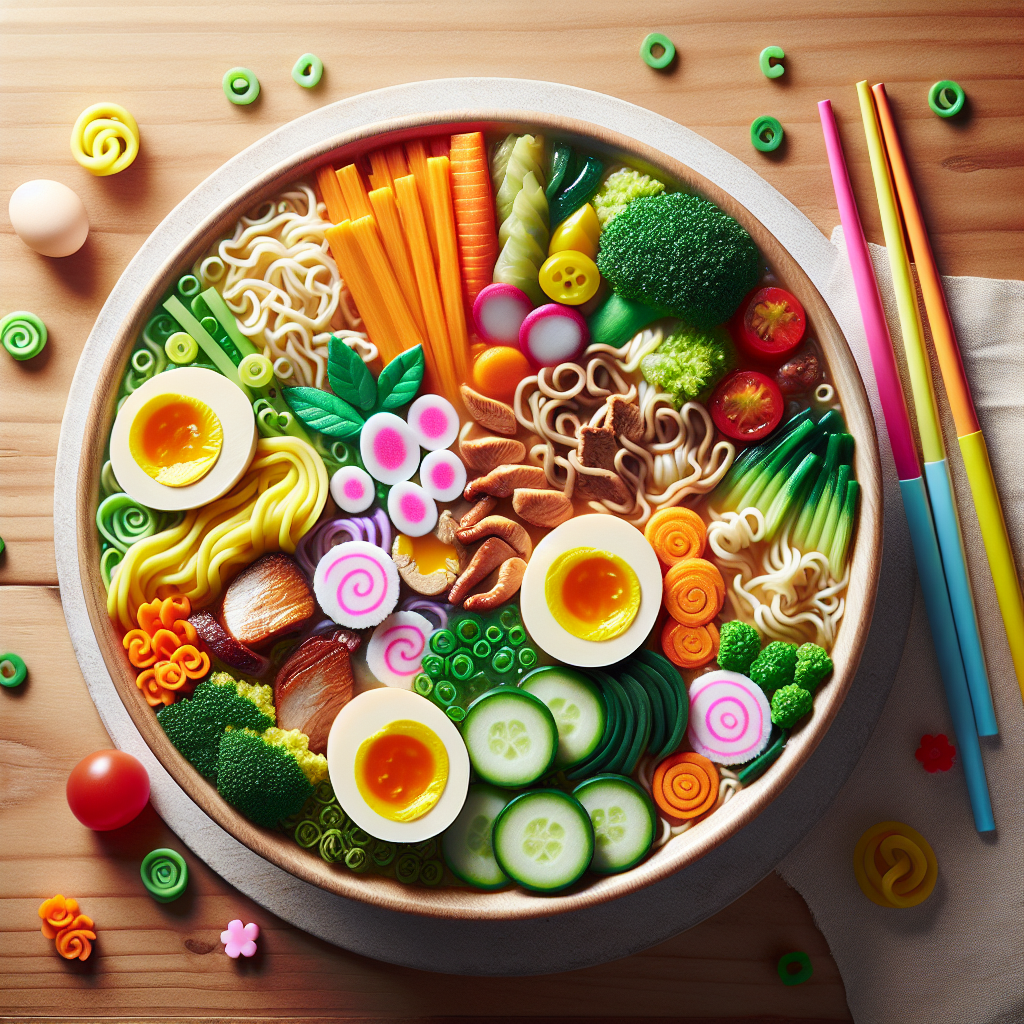If you’re looking for a delicious and nutritious meal that your kids will love, look no further than kid-friendly ramen ideas. Contrary to popular belief, ramen doesn’t have to be just a cheap and unhealthy college staple. With a little creativity and some nutritious add-ins, ramen can be transformed into a balanced and satisfying meal that even the pickiest eaters will enjoy. In this article, we’ll explore some tips and tricks to make ramen kid-friendly while still packing in the nutrients. Get ready to take your ramen game to the next level and impress your little ones with these delightful dishes.
Health benefits of ramen
Ramen, often considered a comfort food, can actually provide several health benefits when prepared with nutritious ingredients. It might surprise you, but ramen can be a good source of essential nutrients that support your overall well-being. Let’s explore the nutritional value of ramen and the advantages it offers.
Nutritional value of ramen
Despite its reputation as a convenience food, ramen can be a valuable addition to a balanced diet. Ramen noodles are typically made from wheat flour, water, and salt. These noodles are rich in carbohydrates, which are essential for providing energy to fuel your daily activities. Additionally, ramen contains small amounts of protein and fiber, which play crucial roles in maintaining a healthy diet.
Rich in carbohydrates
Carbohydrates are the body’s main source of energy. They provide fuel for your brain, muscles, and organs, allowing you to go about your daily tasks with vigor and vitality. Ramen, as a carbohydrate-rich food, can help replenish your energy levels and keep you feeling satisfied throughout the day.
Source of protein and fiber
Protein is a vital macronutrient that plays a crucial role in building and repairing tissues, producing enzymes and hormones, and supporting proper immune function. While traditional ramen may not contain significant amounts of protein, you can enhance its nutritional value by adding ingredients such as lean meats, tofu, or tempeh to increase the protein content.
Fiber, on the other hand, aids in digestion and contributes to a healthy gut. It can help prevent constipation, regulate blood sugar levels, and promote satiety. By incorporating fiber-rich vegetables and whole wheat noodles into your ramen, you can boost its fiber content and enjoy the associated health benefits.
Choosing the right ramen noodles
Not all ramen noodles are created equal. When selecting ramen noodles for a nutritious meal, it’s important to make smart choices. Here are some tips to choose healthier options for your ramen dish.
Opt for whole wheat noodles
Whole-wheat noodles are an excellent alternative to traditional refined-flour noodles. They are rich in fiber, vitamins, and minerals, making them a healthier choice. The high fiber content in whole wheat noodles slows down digestion, keeping you feeling fuller for longer and promoting digestive health.
Look for low-sodium options
Many store-bought ramen noodles and flavoring packets contain excessive amounts of sodium. High sodium intake can lead to high blood pressure and other health issues. To make your ramen healthier, search for low-sodium options or use fresh ingredients and seasonings to enhance the flavor instead of relying on salty packets.
Consider gluten-free alternatives
If you have gluten intolerance or follow a gluten-free diet, there are gluten-free ramen noodles available on the market. These noodles are typically made from alternative grains such as rice, buckwheat, or chickpeas. By opting for gluten-free alternatives, you can still enjoy a delicious bowl of ramen while catering to your dietary needs.
Homemade ramen broth ideas
Creating your own homemade ramen broth allows you to personalize the flavors and control the ingredients used. Here are some ideas on how you can make healthier and more nutritious ramen broths.
Vegetable broth for added nutrients
Vegetable broth is a fantastic option for those seeking to increase their nutrient intake. Packed with vitamins, minerals, and antioxidants, vegetable broth not only enhances the flavor of your ramen but also provides additional health benefits. You can make vegetable broth using a variety of vegetables, such as Carrots, onions, celery, and mushrooms, simmered in water to extract their flavors and nutrients.
Chicken broth for a protein boost
Chicken broth, made from simmering chicken bones, can add a rich and comforting flavor to your ramen. It also provides a protein boost, which is essential for growth, repair, and overall health. Homemade chicken broth offers the advantage of controlling the quality and amount of chicken used, allowing you to create a nutritious broth without added preservatives or excessive sodium.
Miso broth for an umami flavor
Miso broth, a traditional Japanese staple, is made from fermented soybeans and offers a delightful umami flavor to your ramen. Miso is a good source of essential amino acids, vitamins, and minerals. It also contains probiotics, which support a healthy gut microbiome. Adding miso paste to your ramen broth creates a savory and nutritious base that can be enjoyed by both kids and adults.
Adding vegetables for extra nutrition
Vegetables are nutritional powerhouses that add color, texture, and valuable nutrients to your ramen. By incorporating various vegetables into your ramen bowl, you can boost the nutritional value and create a more balanced meal. Here are some vegetable options to consider:
Leafy greens like spinach or kale
Leafy greens, such as spinach or kale, are excellent choices for adding a dose of vitamins and minerals to your ramen. These greens are packed with antioxidants, fiber, and vitamins A, C, and K. Lightly sauté or blanch them before adding them to your ramen to preserve their nutrients and vibrant color.
Colorful bell peppers
Bell peppers not only add a pop of color to your ramen but also offer a range of health benefits. They are rich in vitamins A and C, antioxidants, and fiber. Sauté or stir-fry bell peppers for a crunchy and nutritious addition to your ramen.
Carrots for a dose of Vitamin A
Carrots are known for their high vitamin A content, which promotes healthy eyesight, boosts immune function, and supports skin health. Grate or slice carrots into your ramen for added crunch and a sweet, earthy flavor.
Happy Cooking!


